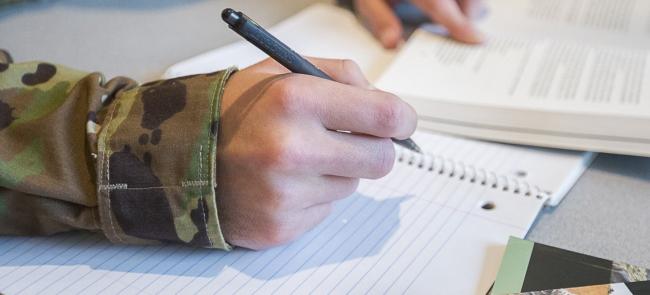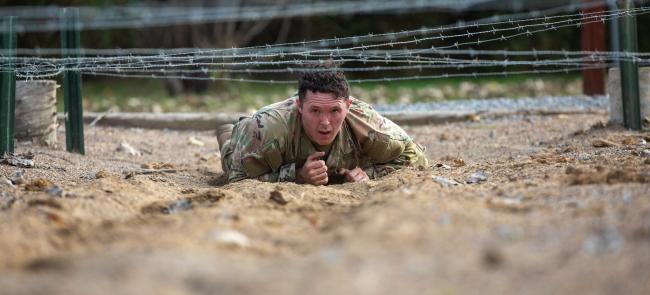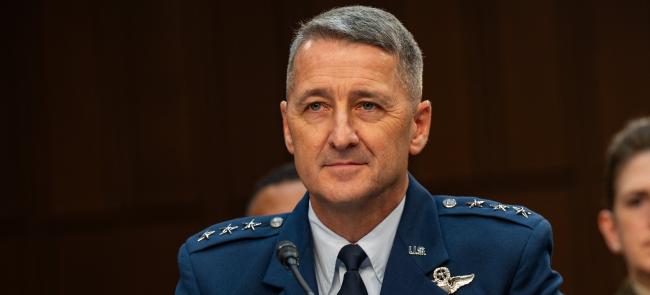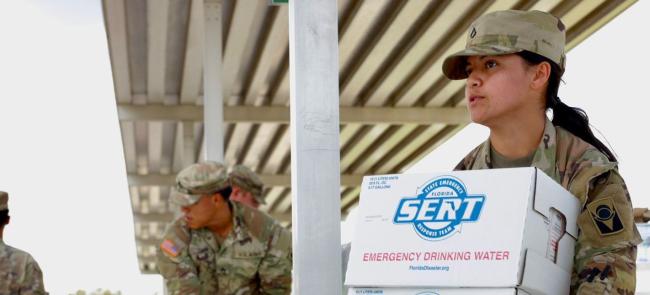
An unprecedented year has meant unprecedented missions and unprecedented attention for the Army National Guard, which has served at the forefront of efforts related to the COVID-19 pandemic, nationwide civil unrest, hurricanes, wildfires and more.
At the year’s peak, more than 99,000 Army Guardsmen were on duty in response to the pandemic, unrest, natural disasters, southwestern border support, election security or overseas missions, said Lt. Gen. Jon Jensen, director of the Army Guard.
“There’s no doubt that this year has been the Year of the Guard,” he said.
Jensen led the Guard seminar at this year’s Association of the U.S. Army Annual Meeting & Exposition, which was held virtually due to the ongoing pandemic.
The seminar, which highlighted a very busy year for the Guard force, also included leaders from California, Minnesota, New York, Texas and Wisconsin.
Like many states, New York has seen its fair share of disaster response missions, including notable responses to Hurricane Sandy and the Sept. 11, 2001 terrorist attacks, said Maj. Gen. Raymond Shields Jr., the state’s adjutant general.
But Sheilds said the coronavirus was a unique mission, both for how wide-ranging it was and for the force protection requirements it involved.
While past responses have focused on small parts of New York state, the virus impacted the entire nation. The response was bigger than any mission the Guard had tackled previously.
“We were creating procedures for things we had never done before,” Shields said, noting the significant force protection issues also at play.
Now, the force is better prepared for a possible resurgence, with institutional knowledge and tactics, techniques and procedures in place to transition seamlessly back to steady state operations, he said.
Across the country, the worst wildfire season since 2003 is testing the abilities of the California Guard and several other states assisting with aviation and other firefighting assets.
More than 2,000 Guardsmen are battling fires in the state, covering a swath of land roughly equal to Connecticut.
Maj. Gen. Matthew Beevers, the assistant adjutant general of California, said the mission highlights the deleterious effects of climate change and the unique missions that help the Guard maintain readiness for the warfight.
It also highlights the need to keep some capabilities, notably aviation, in the Guard. While adding others, such as the MQ-1C Gray Eagle unmanned aerial vehicle.
Guard aviators are flying sometimes harrowing, real-world missions, Beevers said. “Not doing laps around Fort Hood, banking hours.”
But they are doing so without all the tools, such as the Gray Eagle, available to their active-duty counterparts.
The Army has 18 divisions, including 8 in the Guard. And Beevers argued they must be trained and equipped to the same standards.
Another ongoing mission is longstanding support to authorities on the southwest border.
Maj. Gen. Tracy Norris, the adjutant general of Texas, spoke of the mission, which involved more than 2,000 Guardsmen at its peak.
Early next year, Norris said Texas will hand off the lead role for the mission – in support of border patrol agents – to units from other states. The mission includes support for infrastructure, operations, detection and monitoring and air assets.
Texas has had a role on the border for roughly a decade, Norris said. But the long-running mission has not stretched the force. Instead, amid unprecedented activity involving more than 10,000 Guardsmen responding to pandemic, unrest, border and natural disaster missions — Norris said the Texas Guard is seeing one of the best retention rates in the state’s history.
In addition to the ongoing missions, Guard leaders also provided a recap of past efforts.
Maj. Gen. Paul Knapp, the adjutant general of Wisconsin, recounted his state’s efforts amid weeks of civil unrest over the summer.
And Col. Timothy Kemp, commander of the 1st Armored Brigade Combat Team, 34th Infantry Division, Minnesota Army National Guard, recounted his unit’s efforts to resume training for large-scale combat operations amid the COVID-19 pandemic.











